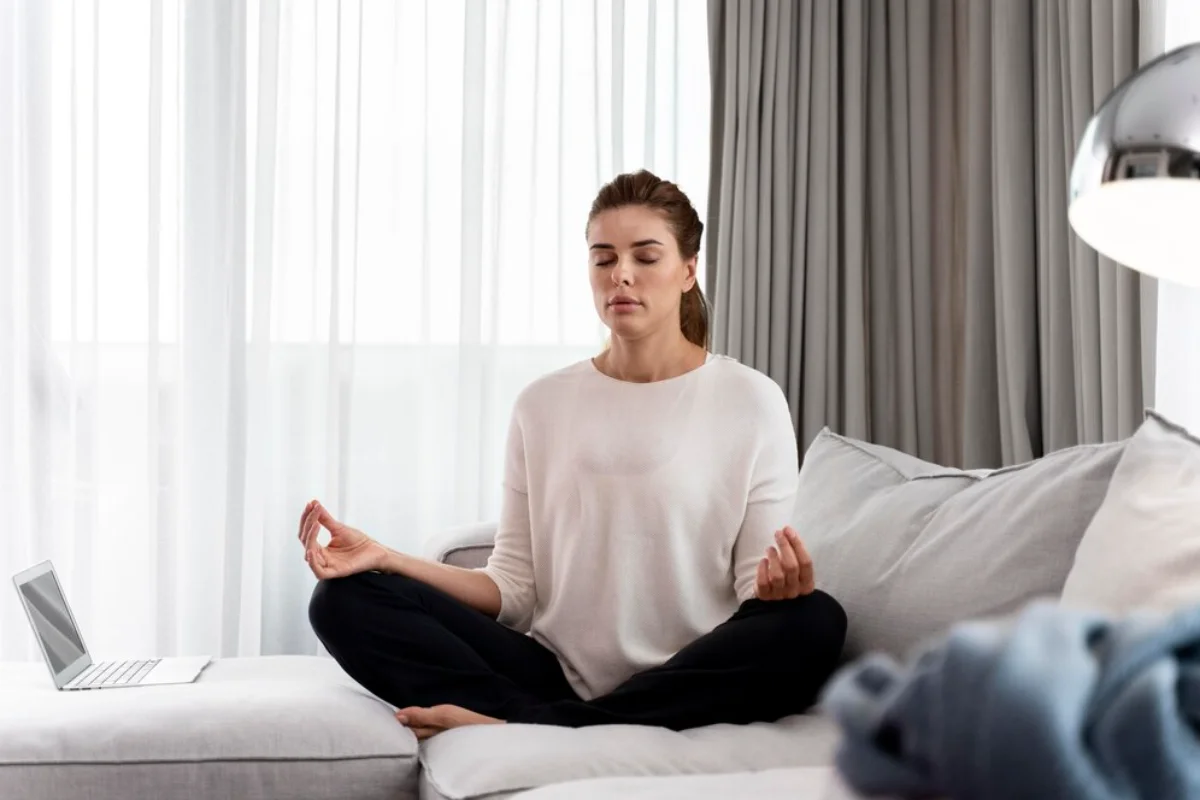
Breathwork Techniques for Stress and Recovery
In today’s fast-paced world, stress is a standard part of life. Meeting deadlines, juggling family duties, and dealing with daily challenges can weigh heavily on us, harming our mental and physical health. Amid this chaos, breathwork techniques have become a potent tool for managing stress and aiding recovery. Based on ancient practices, these methods provide a simple way to boost mindfulness, increase lung capacity, and reach deep relaxation.
Breathwork goes beyond taking deep breaths. It is a focused practice that uses controlled breathing patterns, which can influence both the body’s and mind’s state. This blog will look at different breathwork techniques and their benefits. We will also discuss how to easily include them in your daily routine to reduce stress and support recovery.

Key Benefits / Why It Matters
Breathwork techniques are not just about breathing; they are about harnessing the power of the breath to bring about profound changes in the body and mind. Here are some key benefits of incorporating breathwork into your life:
1. Stress Reduction
Breathwork offers a quick way to reduce stress. Stress triggers our body’s fight-or-flight response. This response raises our heart rate, causes shallow breathing, and increases anxiety. Techniques like deep breathing activate the parasympathetic nervous system. This system helps us relax and lowers stress hormones like cortisol.
2. Enhanced Mindfulness
Mindfulness means being present in the moment. It involves being aware of your thoughts, feelings, and surroundings. Breathwork helps you achieve mindfulness. It focuses your attention on your breath. This draws you away from daily distractions and worries. As a result, you gain better mental clarity and emotional strength.
3. Improved Lung Capacity
Regular breathwork practice can significantly improve lung capacity. Deep inhalations and exhalations strengthen respiratory muscles. This makes your lungs more efficient. As a result, your respiratory health improves, boosting your endurance and energy levels.
4. Better Sleep Quality
Stress and anxiety are common culprits of sleep disturbances. Breathwork techniques can help calm the mind and relax the body, making falling and staying asleep easier. Practices like diaphragmatic and alternate nostril breathing are particularly effective in promoting restful sleep.
5. Emotional Regulation
Breathwork can also aid in emotional regulation by helping you manage intense emotions such as anger, frustration, and sadness. Focusing on your breath can create a sense of calm and balance, allowing you to respond to challenging situations with greater composure and empathy.

Step-by-Step Guide to Breathwork Techniques
Now that we know breathwork’s benefits let’s explore specific techniques for your daily routine. Each technique targets different aspects of stress and recovery. Feel free to try them out and find the ones that suit you best.
1. Deep Breathing
Deep breathing is one of the simplest and most effective breathwork techniques for stress relief.
How to Practice Deep Breathing:
- Find a Comfortable Position: Sit or lie down in a comfortable position. Close your eyes and take a few moments to relax your body.
- Inhale Deeply: Breathe slowly through your nose, allowing your abdomen to expand as you fill your lungs with air.
- Hold the Breath: Pause for a few seconds, allowing the oxygen to circulate throughout your body.
- Exhale Slowly: Gently release the breath through your mouth, releasing any tension or stress. Repeat for several minutes.
2. Mindfulness Breathing
Mindfulness breathing combines breath awareness with mindfulness meditation.
How to Practice Mindfulness Breathing:
- Set the Scene: Find a quiet space where you won’t be disturbed. Sit comfortably with your back straight.
- Focus on Your Breath: Close your eyes and bring your attention to your breath, noticing the sensation of the air entering and leaving your nostrils.
- Observe Without Judgment: If your mind starts to wander, gently bring your focus back to your breath.
- Continue for 10-15 Minutes: Gradually increase the duration as you become more comfortable with the technique.
3. Alternate Nostril Breathing
Alternate nostril breathing, called Nadi Shodhana, is a great way to balance your mind and body.
How to Practice Alternate Nostril Breathing:
- Prepare Your Posture: Sit comfortably with a straight spine and relaxed shoulders.
- Close Your Right Nostril: Use your right thumb to close your right nostril. Inhale deeply through your left nostril.
- Switch Nostrils: Close your left nostril with your right ring finger. Release your right nostril.
- Exhale Through the Right Nostril: Breathe out slowly and fully through your right nostril.
- Repeat the Process: Inhale through the right nostril, close it, and exhale through the left nostril. Keep going for several minutes.

Additional Expert Tips & Common Mistakes to Avoid
Expert Tips
- Consistency is Key: Practice breathwork daily for the best results.
- Listen to Your Body: Stop if you feel lightheaded or uncomfortable.
- Combine with Other Practices: Enhance breathwork with yoga or meditation.
Common Mistakes
- Shallow Breathing: Focus on deep, diaphragmatic breaths.
- Rushing the Process: Take your time to experience each breath fully.
- Ignoring Posture: Maintain a straight spine for optimal airflow.
Advanced Insights / Expert Recommendations
For those looking to deepen their breathwork practice, consider exploring:
- Box Breathing: Used by Navy SEALs to enhance focus and reduce stress.
- Holotropic Breathwork: A technique for emotional healing and self-exploration.
- Pranayama: Yogic breathing exercises to expand life force energy.
Harnessing the Power of Breath for a Balanced Life
Breathwork techniques are easy but powerful ways to handle stress and aid recovery. Adding deep, mindfulness, and alternate nostril breathing to your routine can boost mental clarity, emotional strength, and general well-being.
Start small, remain consistent, and allow yourself to embrace the transformative power of your breath fully. Which breathwork technique will you try first? Share your experiences and insights in the comments below!


